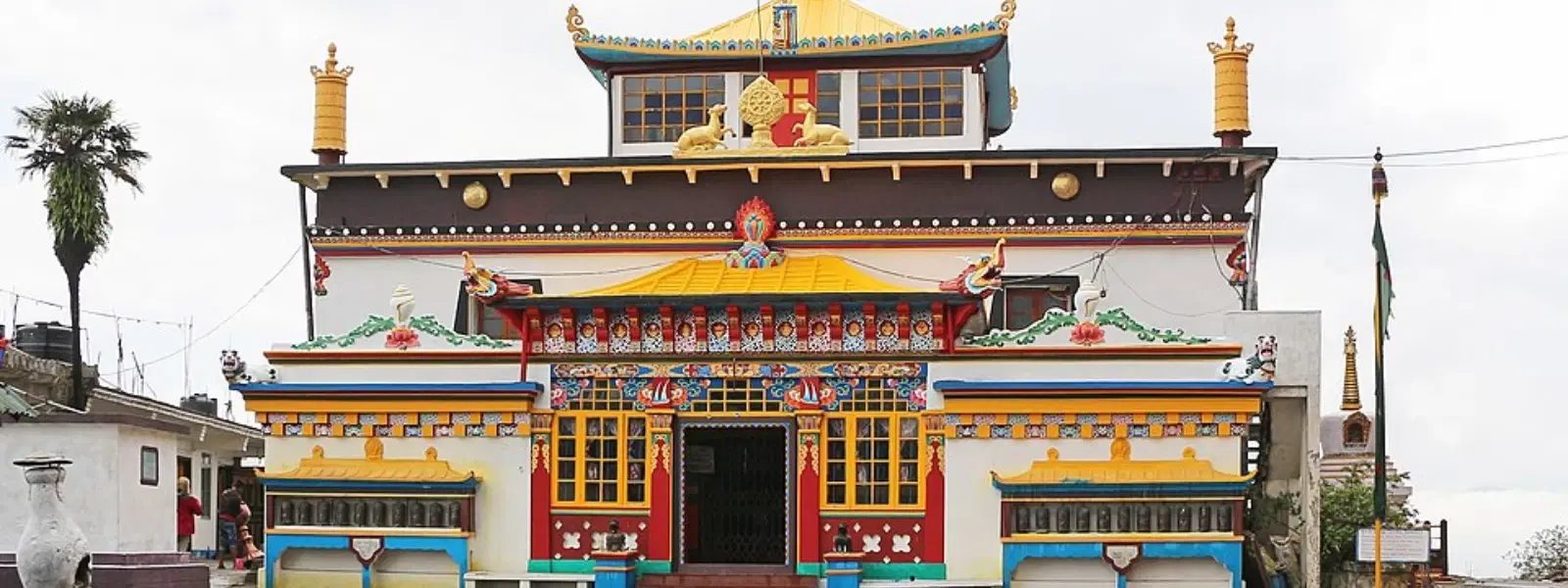
Flights
•04 min read

The serene allure and spiritual mystique of island monasteries in India instantly captivate the soul. Nestled on isolated islands and fringed by the gentle lapping of water, these sanctuaries offer a rare chance to connect with ancient traditions and nature in perfect harmony. This blog unravels the frequently asked questions about island monasteries in India, providing insights into their historical roots, cultural significance, and practical tips to plan your journey to these spiritual retreats.
Island monasteries in India are remote religious sites located on islands or near water bodies, setting them apart from their mainland counterparts. Their geographical isolation creates an atmosphere of tranquility ideal for meditation and self-reflection. Architecturally, these sanctuaries often reflect the rich influences of Buddhist, Hindu, or Jain traditions, featuring intricate carvings and serene layouts that blend harmoniously with the natural surroundings.
The origins of these island monasteries can be traced back to ancient spiritual practices that sought solace in nature’s unspoiled beauty. Over centuries, they evolved into guardians of cultural heritage, preserving sacred teachings and rituals that continue to inspire modern-day seekers. These sites stand as living museums where historical narratives and spiritual wisdom merge, offering visitors an intimate view of India’s diverse spiritual legacy.
Among the various spiritual sanctuaries, certain island monasteries and temples have gained renown across India. For instance, Tawang Monastery in Arunachal Pradesh is celebrated for its majestic size and vibrant monastic traditions. In the cold expanses of Ladakh, Phuktal Monastery offers an awe-inspiring experience amidst dramatic landscapes. The Golden Pagoda in Namsai exudes a serene glow along with a deep spiritual narrative, while Nalanda Mahavihara in Bihar reminds us of India’s scholarly and spiritual past. Each of these sites boasts a unique tale of devotion, architectural splendor, and cultural richness.
Several island pilgrimage sites, such as secluded temples in the Andaman and Nicobar Islands, attract spiritual seekers longing for solitude and reflection. These sites are prized not only for their religious significance but also for the peaceful isolation they offer. Travellers often find solace in these pristine environments, where the serene ebb and flow of water amplifies the meditative ambiance intrinsic to spiritual journeys.

For many, island monasteries are sanctuaries for meditation and personal growth. The calm and serene settings provided by these remote locations foster mindfulness, allowing visitors to break free from the distractions of modern life. Spending time in these peaceful retreats can lead to improved mental clarity, emotional balance, and a deep, introspective understanding of oneself.
The regions surrounding these monasteries are a delight for nature lovers. Picture lush greenery, crystalline waters, and breathtaking vistas that mirror the tranquility within the monastery walls. Visiting these sites not only quenches spiritual thirst but also provides a unique perspective on India’s rich cultural history, set against a backdrop of natural beauty that is both inspiring and rejuvenating.
Did You Know? Island monasteries in India are not just spiritual retreats but also living museums of ancient traditions, offering visitors a rare glimpse into the harmonious blend of nature and spirituality.
Planning your visit during the ideal season is key to enjoying these tranquil retreats. The cooler months, often during late autumn and early spring, are perfect for exploring these spiritual sites as the weather is mild and the natural scenery is at its peak. However, some monasteries shine under the summer sun when the islands are lush and vibrant, so consider your weather preferences and local accessibility.
Reaching these remote sanctuaries may require a mix of transportation modes, including small local flights, ferries, and ground travel. While some island monasteries are accessible via well-developed routes, others might involve a short boat ride from the mainland, reaffirming the seclusion and charm of these sites. It is advisable to research local travel options and plan your connectivity well in advance.
Many island monasteries and their surrounding areas offer various lodging options for spiritual travelers. Options range from simple guesthouses and eco-friendly resorts to unique stays within the monastery premises itself. These accommodations aim to complement the serene environment, ensuring that your stay is as peaceful and reflective as the spiritual experiences awaiting you.

When visiting religious sites on Indian islands, it is important to adhere to local customs and traditions. Dress modestly to show respect, avoid loud conversations in sacred spaces, and always ask for permission before taking photographs. Observing these considerate practices helps maintain the sanctity of these sites for all visitors.
Tawang Monastery is renowned for being one of the largest monasteries in India and a major center for Mahayana Buddhism. It is celebrated for its stunning architecture and picturesque location amidst the Himalayan mountains.
Yes, Tawang Monastery offers accommodations for visitors, especially those interested in spiritual retreats. Availability may vary, so it’s advisable to check in advance.
Many monasteries in Ladakh, such as Hemis and Thiksey, allow visitors to stay for short periods. These stays offer a unique opportunity to engage in meditation and learn more about local spiritual practices.
The largest monastery in India is Tawang Monastery, located in Arunachal Pradesh. Its monumental structure and rich cultural heritage make it a significant landmark.
India is home to hundreds of monasteries, spanning Buddhist, Hindu, and Jain traditions. Many are set in remote and scenic locations, including islands, each contributing uniquely to the country's spiritual landscape.
Island monasteries in India offer more than a place of worship – they are gateways to tranquility, cultural discovery, and deep spiritual introspection. With their blend of ancient architectural marvels and pristine natural surrounds, these sacred sites beckon the wanderer, the planner, the professional, and the luxury seeker alike to explore a part of India steeped in heritage and serene beauty. Let their peaceful presence inspire you to discover a side of India where nature and spirituality coalesce in perfect harmony.